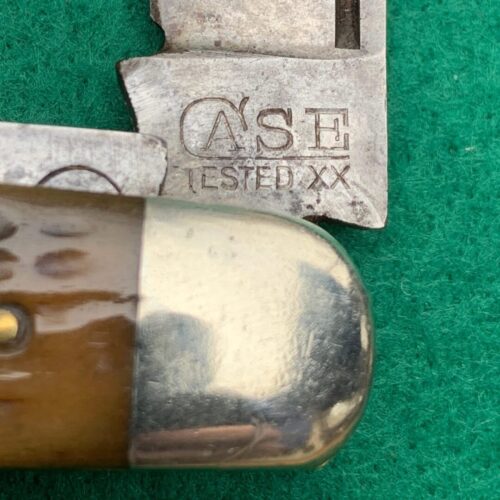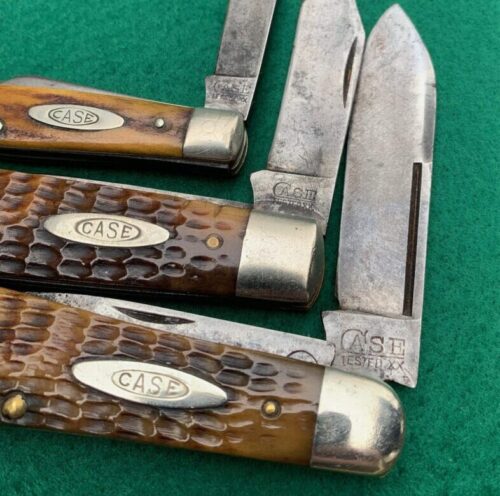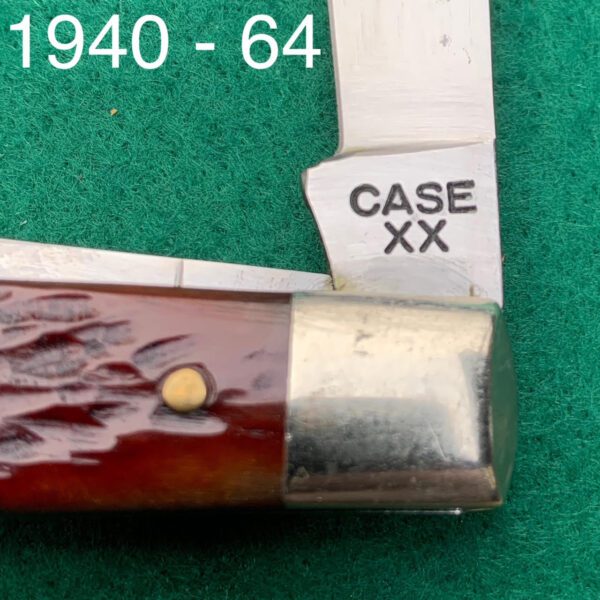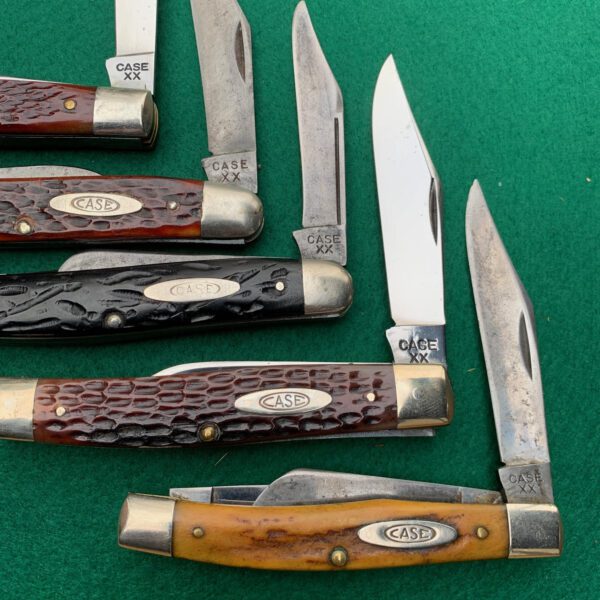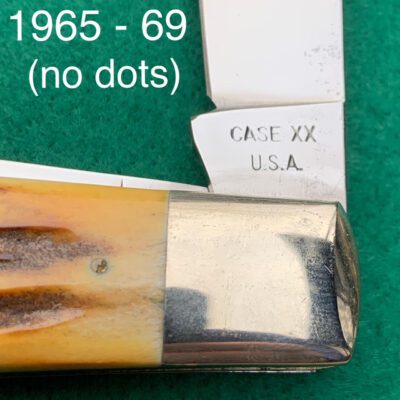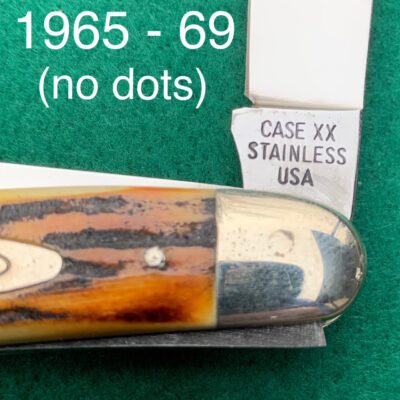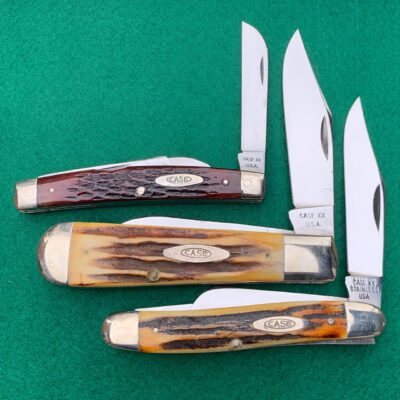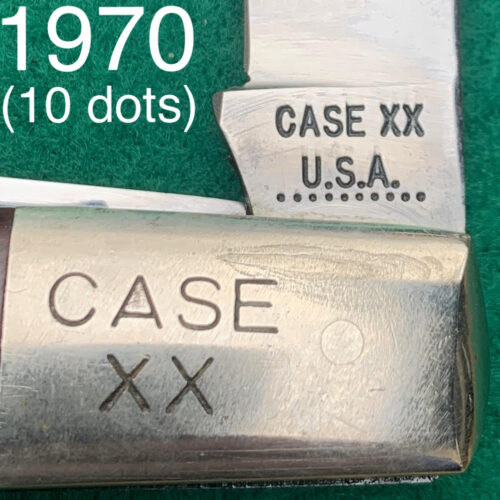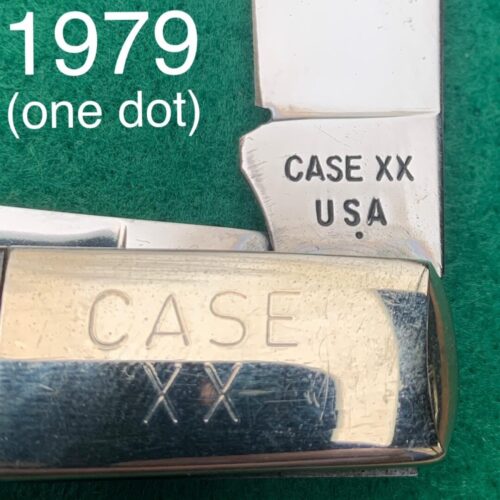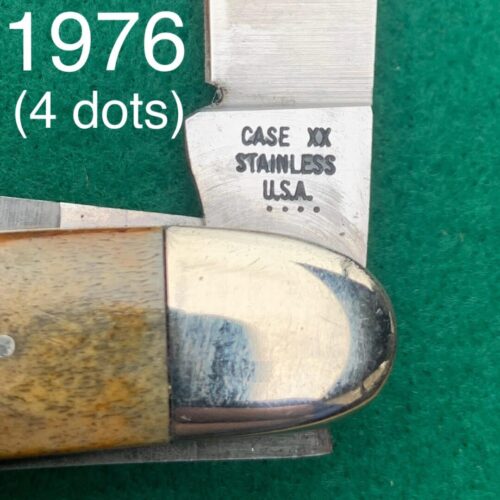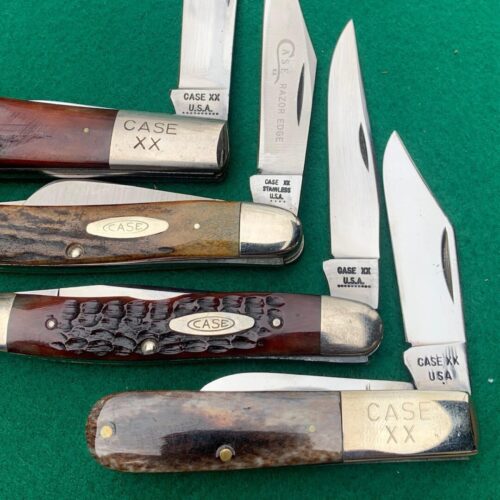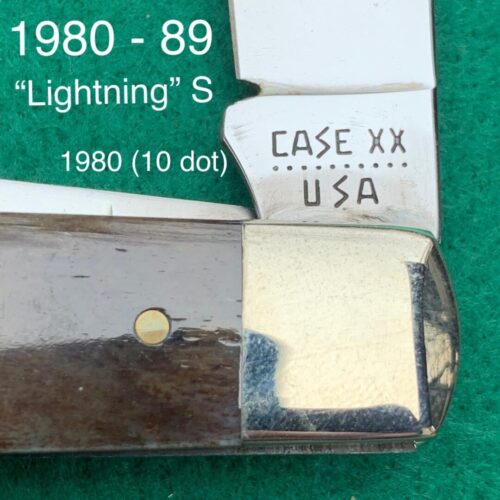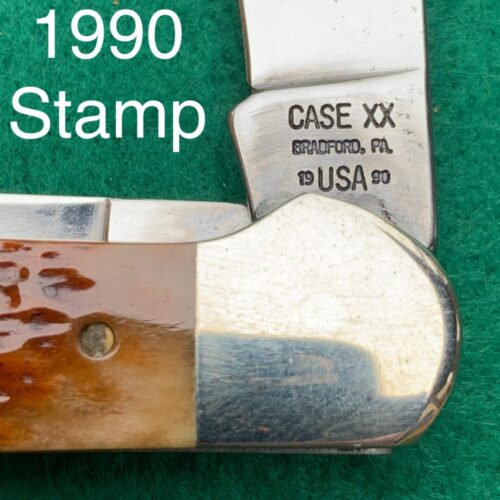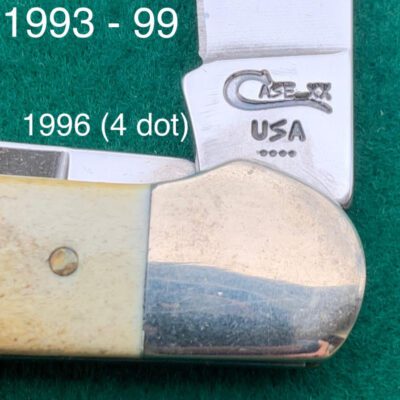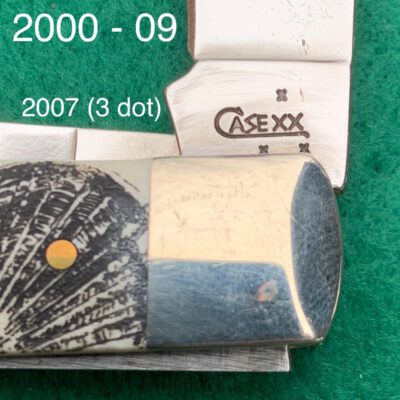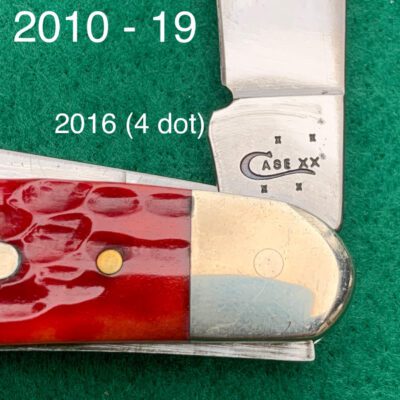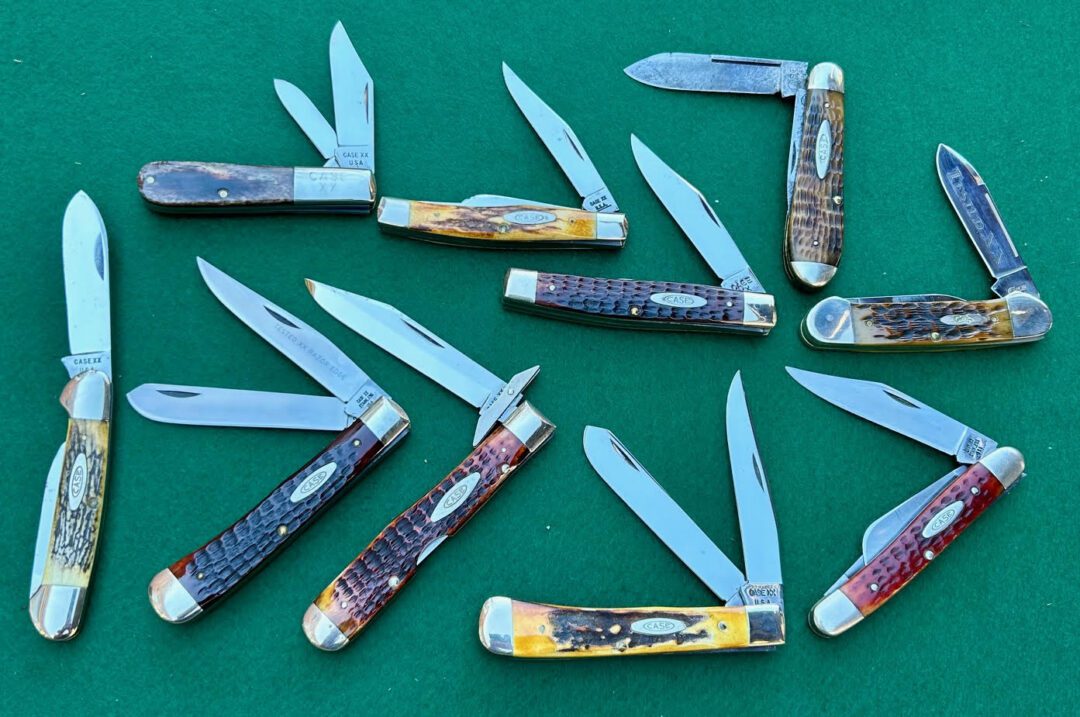Pocket knives made by W.R. Case & Sons are some of the most fun old pocket knives to collect as they have some defining characteristics that make them fairly easy to date. I will share some of these characteristics; mainly blade stamps and shields. Although not exhaustive, this article will provide you with a starting point and some things to look for as you try gather more information on your Case pocket knives.
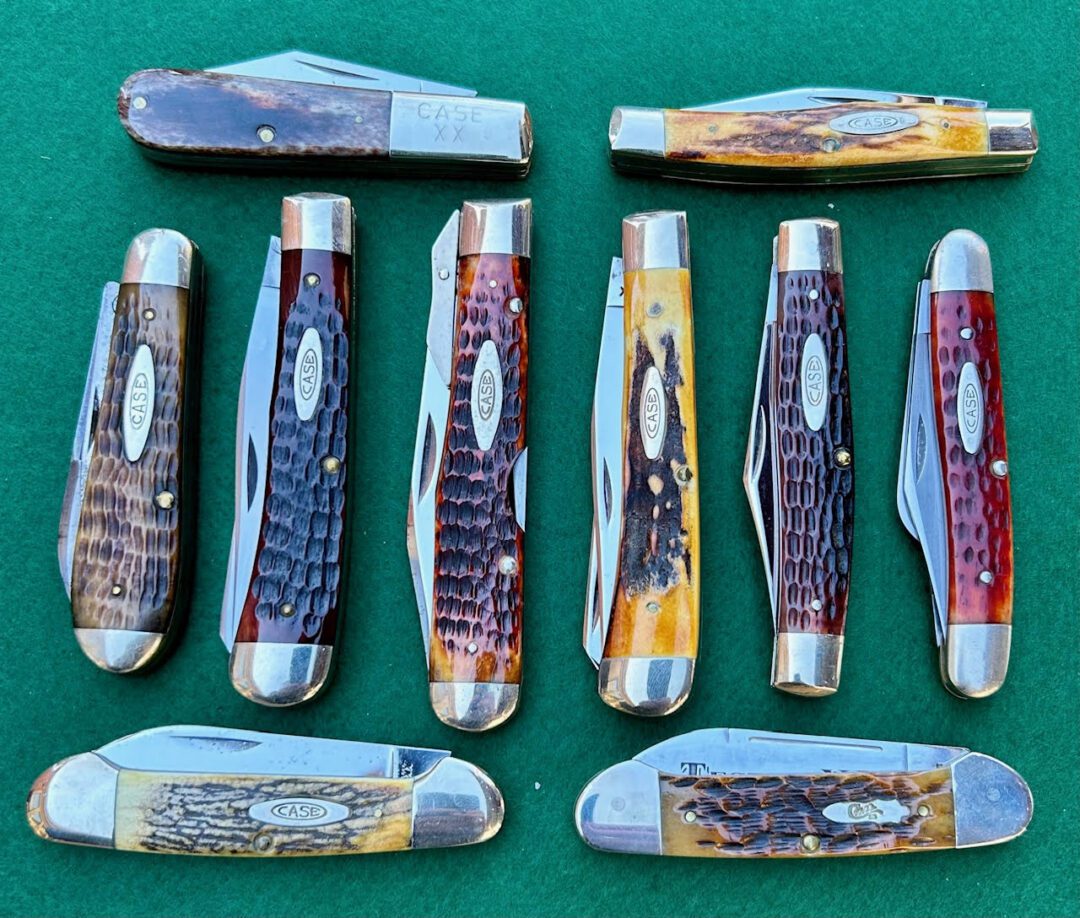
Overall, the newer the Case knife, the easier it is to establish its age. If your knife was made in 1970 or after, you should be able to tell the EXACT YEAR of manufacture. There are a few exceptions to this (see transition knives below).
This article will cover what I believe to be the “Golden Age” of Case knives…the period from 1920 to the late 1970s, when quality was very high and classic handle materials were offered. There are some additional (mostly newer) Case stamps towards the bottom of the page. I also plan on making a pre-1920 page at some point.
1920-1940
Check out a video of the Case Tested harness jack pictured above from my YouTube channel.
The XX trademark goes back to the practice of double tempering the blade steel. In this process, workers would imprint an “X” on a batch of knives during the first furnace session. When undergoing the second run, a second “X” would be added, serving as a clear indicator that the knives had undergone a rigorous dual-testing procedure. After 1940, The “Tested XX” trademark would sometimes show up on blade etches but not on tang stamps.
Case Tested XX knives are very scarce in excellent condition and are valuable on the collectors market. Green bone, genuine stag and interesting celluloid patterns are some of the more popular handle materials you will find on knives from this era.
1940 – 1964
This stamp is the simplest out of all the case stamps covered today; just a Case XX is visible on the tang. There is a larger range here (20+ years) but different sources reveal that if the back of the tang is missing a pattern number, it was manufactured from 1940 – 1948. A Case XX stamped knife with a pattern number would therefore indicate a knife made between 1948 – 1964.
1965 – 1969
1970 – 1979
Transition Knives
Some Case knives are considered transition knives. This occurs when two different dates appear on two different blades. These knives are considered to be relatively scarce and command a bit of a premium on the collectors market.
Other Case Blade Stamps
The blade stamps from 1980 – 89 are often referred to as the “Lightning S” stamp due to the straight line shape of the letter S in both the word ‘Case’ and ‘USA’. Just like the 1970’s system, a dot was taken away each year until one dot remained in 1989. From 1990 to mid 1993, the actual date was stamped on the tang on either side of USA (see 1990 stamp above).
From the 1990s on, the longtail C would once again make an appearance and would continue from that point on until present. Starting in 2000, a combination of dots and x’s would supplant the “just dots system.” Dots were taken away first and then the x’s would be removed one by one until one x remained (2009). The 2010’s followed the same system with a slight variation to the Case XX design on the tang.
Shields
The classic oval shield on Case knives is an immediate identifier and a symbol that represents quality that Case has produced over the years. Slight variations of these oval nickel silver shields are found on Case knives from the 1920s to the 1980s. The following contains some of the common variations you will see.
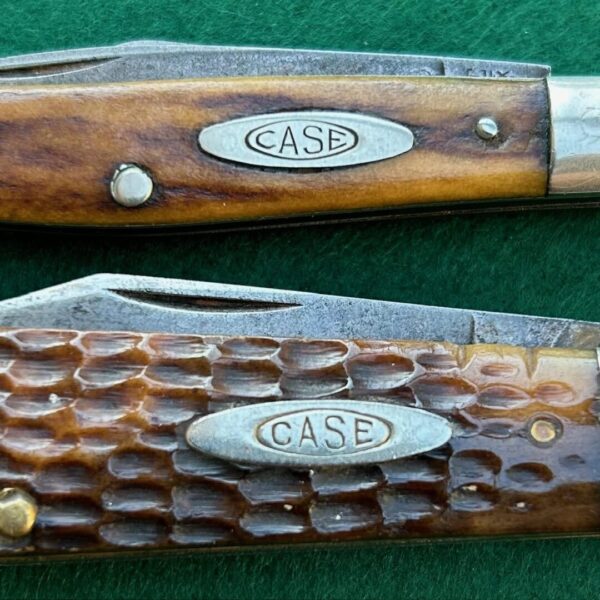
The above shields are most commonly found on Tested era (1920-40) knives. Notice the letters found in the top shield are made from a combination of straight lines. This shield seems less common and is sometimes referred to as the “block letter” shield. The shield on the bottom is more commonly found on Tested era knives and is referred to as the “closed C” shield.
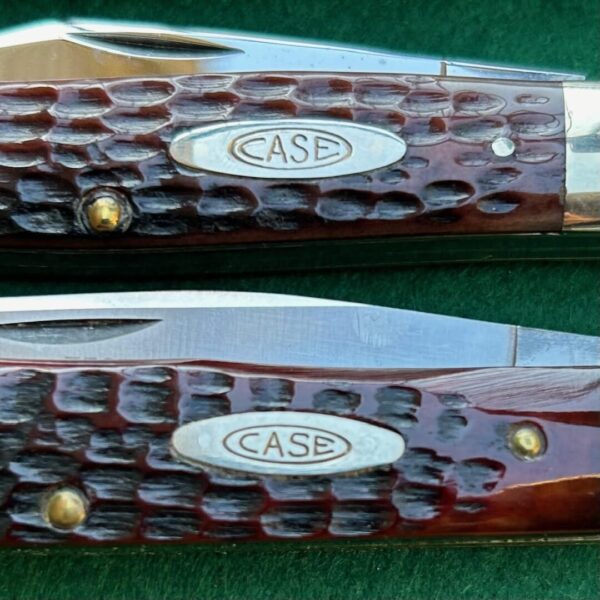
The above shields feature an “open C” in the word Case. Do you notice the difference between the two shields in the above photo? Hint…it’s in the S’s. The above shield has a “tall S” which can be found on late Tested Era knives and XX knives. The shield below has a “short S” or squished S and can be found on knives from the late XX period through the “Lightning S” stamped knives of the 1980s.
There were additional shields that were used during this time. For example the “bomb shield” was used on early Tested Era knives from about 1920 – 1925. The small diamond shield, as seen below, is seen on Tested era knives from 1920 – 1940. Click the picture to see the whole knife.
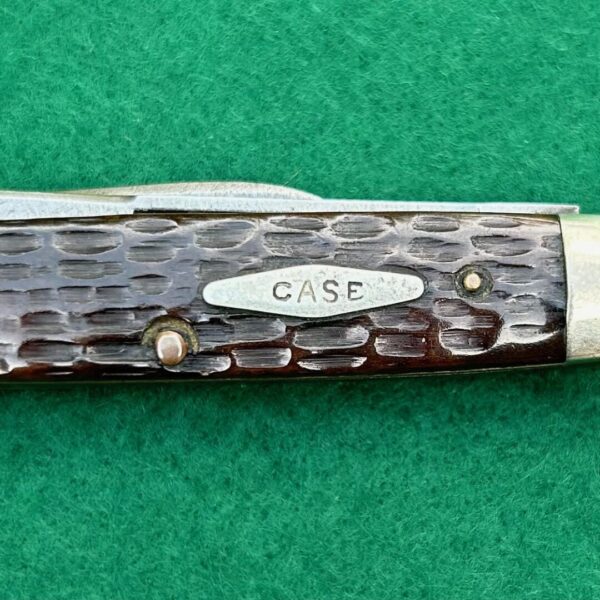
———-
Collecting Case knives can be very rewarding. Not only are there a wide variety of patterns and handle materials that can be sought out, a date of manufacture is pretty easy to nail down if you know the above information. Let me know if you think I should add any other information. Happy Collecting!

